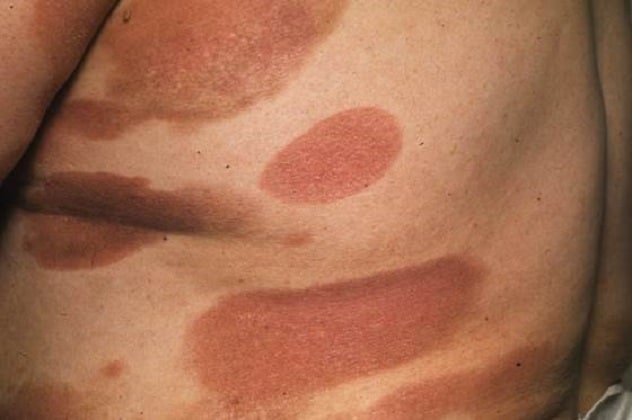Aug. 10, 2023
Cutaneous T-cell lymphoma (CTCL) is a rare cancer that starts in a patient's T cells and appears on the skin. There are several types of CTCL, and the disease can be indolent or aggressive.
N. Nora Bennani, M.D., a hematologist and oncologist at Mayo Clinic in Rochester, Minnesota, and Nneka I. Comfere, M.D., a dermatologist and dermatopathologist at Mayo Clinic in Rochester, explain the importance of multidisciplinary care planning beginning with an accurate diagnosis for patients with CTCL.
Diagnosing CTCL
"It's not unusual for patients with CTCL to have multiple biopsies over several years before a diagnosis is made," says Dr. Bennani. "These diseases are rare, and many health care professionals simply have not seen many cases."
Diagnosing CTCL can be an incredibly difficult task because of the rarity and variance in the disease. There are many subtypes. Identifying which disease type a patient is facing is imperative for assigning the correct treatment protocol.
"CTCL can mimic a lot of the benign rashes we see in the skin," says Dr. Comfere. "It's so hard to recognize in the earliest stages."
Clinical image of CTCL

Clinical image of CTCL
This image shows an example of a patch-stage lesion of cutaneous T-cell lymphoma.
Dr. Comfere notes that any patient with lymphoma in the skin can be referred for expert care and diagnosis at Mayo Clinic. As a dermatopathologist, Dr. Comfere also often receives pathology for consultation.
In many cases, it's necessary to follow a patient through topical treatments of lesions previously thought benign before assessing for underlying lymphoma. The process can be distressing for patients because initial diagnoses can be incredibly vague and lesions can be noticeable.
Multidisciplinary care for CTCL
Multidisciplinary care is important for patients with CTCL from consultation and diagnosis through chronic management of the condition. Unfortunately, it is not uncommon for patients to receive siloed care. The disease can impact many of the body's systems — meaning a patient may need care in hematology, dermatology, radiation oncology and even palliative care. Drs. Bennani and Comfere have collaborated with their colleagues at Mayo Clinic to break down those siloes.
"We have a very tightknit group of experts who diagnose, treat and care for patients with CTCL," says Dr. Comfere. "We meet regularly to review and address diagnostic or therapeutic questions and develop optimal care plans for our patients."
In many cases, a patient needs treatment for the underlying lymphoma as well as symptomatic treatment to manage the painful skin lesions associated with CTCL. Similarly, patients can present in any number of specialty groups with concerns for CTCL. It's important that those specialists work with one another to ensure the patient receives a comprehensive evaluation and care plan.
"These patients have quite complex diagnoses," says Dr. Bennani. "When we treat their condition comprehensively, we can put together an optimal care management plan."
Ongoing and upcoming opportunities for your patients with CTCL
Drs. Bennani and Comfere and their colleagues at Mayo Clinic Comprehensive Cancer Center are working to advance the future of care for patients with CTCL, including opportunities for clinical trials:
- In a phase 1 study, researchers aim to identify the best dose as well as possible benefits and side effects of duvelisib with nivolumab for patients with mycosis fungoides and Sezary syndrome.
- In a phase 2 study, researchers will evaluate pembrolizumab as an initial therapy for patients with advanced mycosis fungoides.
- In a phase 2 study, researchers will determine the effect of extracorporeal photopheresis and mogamulizumab in treating patients with erythrodermic CTCL.
Drs. Benanni and Comfere and their colleagues plan to launch a formalized CTCL clinic this fall. The CTCL clinic will allow the multidisciplinary team to consult on patients together. Patients can be referred for care through typical hematology referral processes.
For more information
Refer a patient to Mayo Clinic.